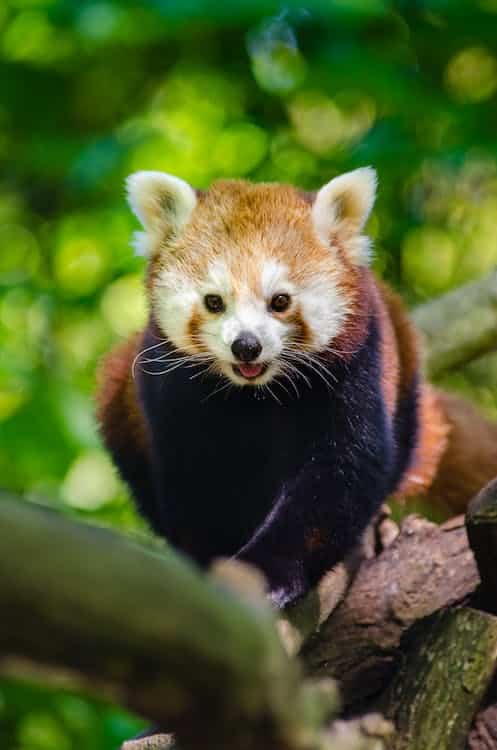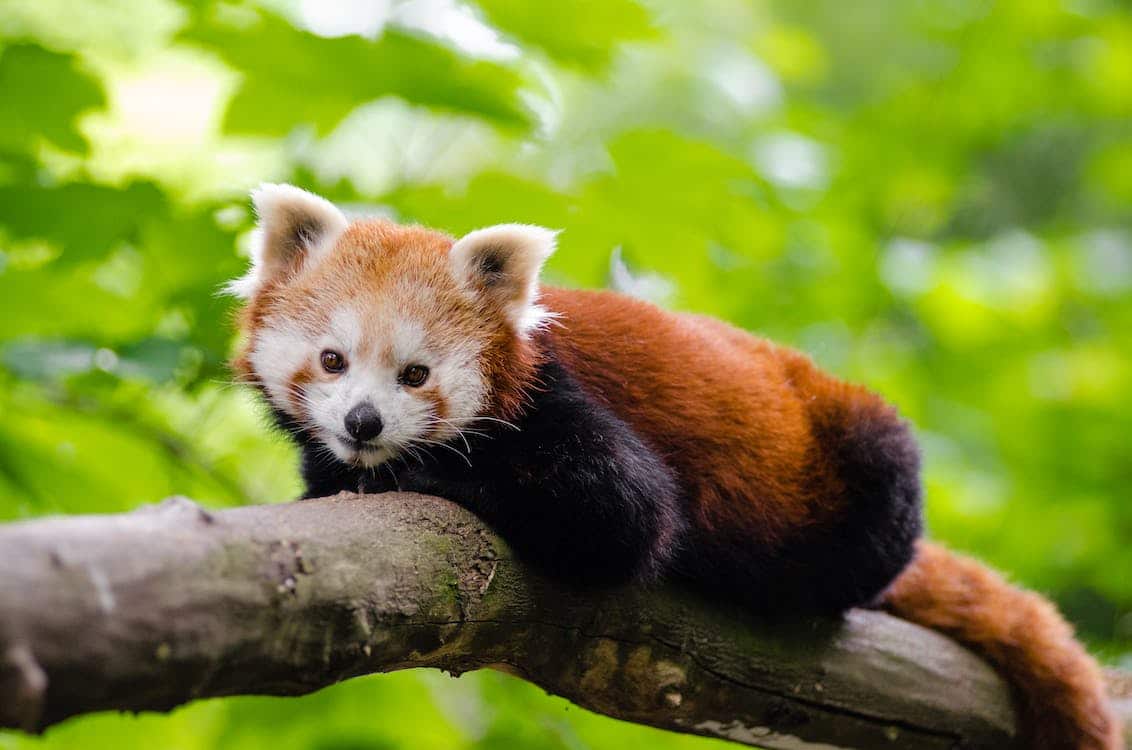Lee Richardson Zoo Species Spotlight: Red Panda
In this series, we spotlight one of the many fascinating creatures that live at the Lee Richardson Zoo. In this blog, we’ll take a look at the cute and furry red panda.
The Basics
- Common Name: Red Panda
- Scientific Name: Ailurus fulgens fulgens
- Hometown: Mountain forests of Central Asia (Nepal, Northern Burma, China)
- Current Address: Lee Richardson Zoo – Wild Asia
- Conservation Status: Endangered
Meet the Red Panda
The red panda is a tree-climbing mammal that lives in the mountains of central Asia. Despite the name, it’s not very closely related to the giant panda. The red panda is more like a raccoon while the giant panda is actually a bear. In fact, red pandas are more closely related to seals than giant pandas!
Built to Climb
The red panda spends most of its life living in trees, and has a few adaptations that make tree life a little easier. Flexible joints, retractable claws, and a nimble tail all help red pandas make their homes in and around trees. They even have a special rotating ankle joint to help them run down trees quickly, just like a squirrel.
Red Pandas have thick red, white, and black fur to help survive cold mountain winters and blend in with their surroundings. Their red colored back helps them blend in with red moss on the forest floor, and their black belly helps them blend in with darker tree bark. Furry feet keep their toes warm when walking around on snow.
Mountain Dwellers
Red pandas live in the cold mountain forests of central Asia, including the Himalayan mountain range. In fact, red pandas have been found to live at up to 14,000 feet! But, they can be difficult to observe in the wild as they usually only move around at night.
Most of the time, red pandas live solitary lives, aggressively protecting their own area.
In hotter weather, the red panda will sleep on a tree branch with its feet dangling off the sides to stay cool. When it’s cold, it will sleep curled up in its tail, just like a cat.
Bamboo Lovers
Red pandas have been known to eat things like eggs or small mammals but mostly stick to a vegetarian diet. During the winter, bamboo makes up almost 94% of what they eat. In summer, bamboo is around 50% of their diet because they can more easily find other fruits and vegetables.
Even though the red panda and giant panda are only distant cousins, they both have similar special thumbs designed for gripping bamboo. This is a case of convergent evolution, where nature solves the same problem in the same way, even for different species.
In another coincidence, both animals have a digestive system that was originally designed for a carnivore but has been adapted to a life eating primarily bamboo leaves and stalks.
Family Life
Red panda pregnancy lasts for a little over four months. During this time, the mother-to-be finds a suitable den – like a hollow log or a rock crevice – then builds up a nest. Red panda litters usually include one to four cubs, and they will stay with their mom for about six months before heading out on their own.
Shrinking Numbers
Sadly, red pandas are an endangered species, with just 10,000 still living in the wild. The greatest dangers to these animals are poachers hunting them for fur, and loss of habitat due to deforestation and population growth. Zoos help keep red pandas alive by giving them a safe place to live.
Go Take a Look
If you would like to get to know a real red panda, head down to the Lee Richardson Zoo and meet one in person. This furry friend can be found at the Wild Asia area of the park. The zoo is open from 8 am to 5 pm, and admission is free! Check out their website here.



